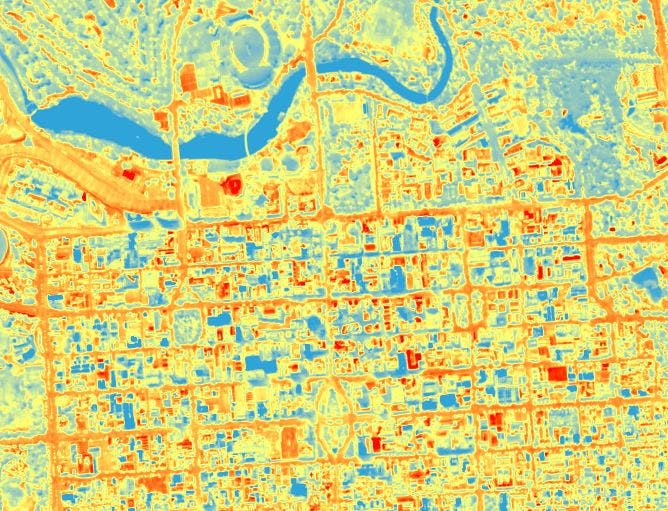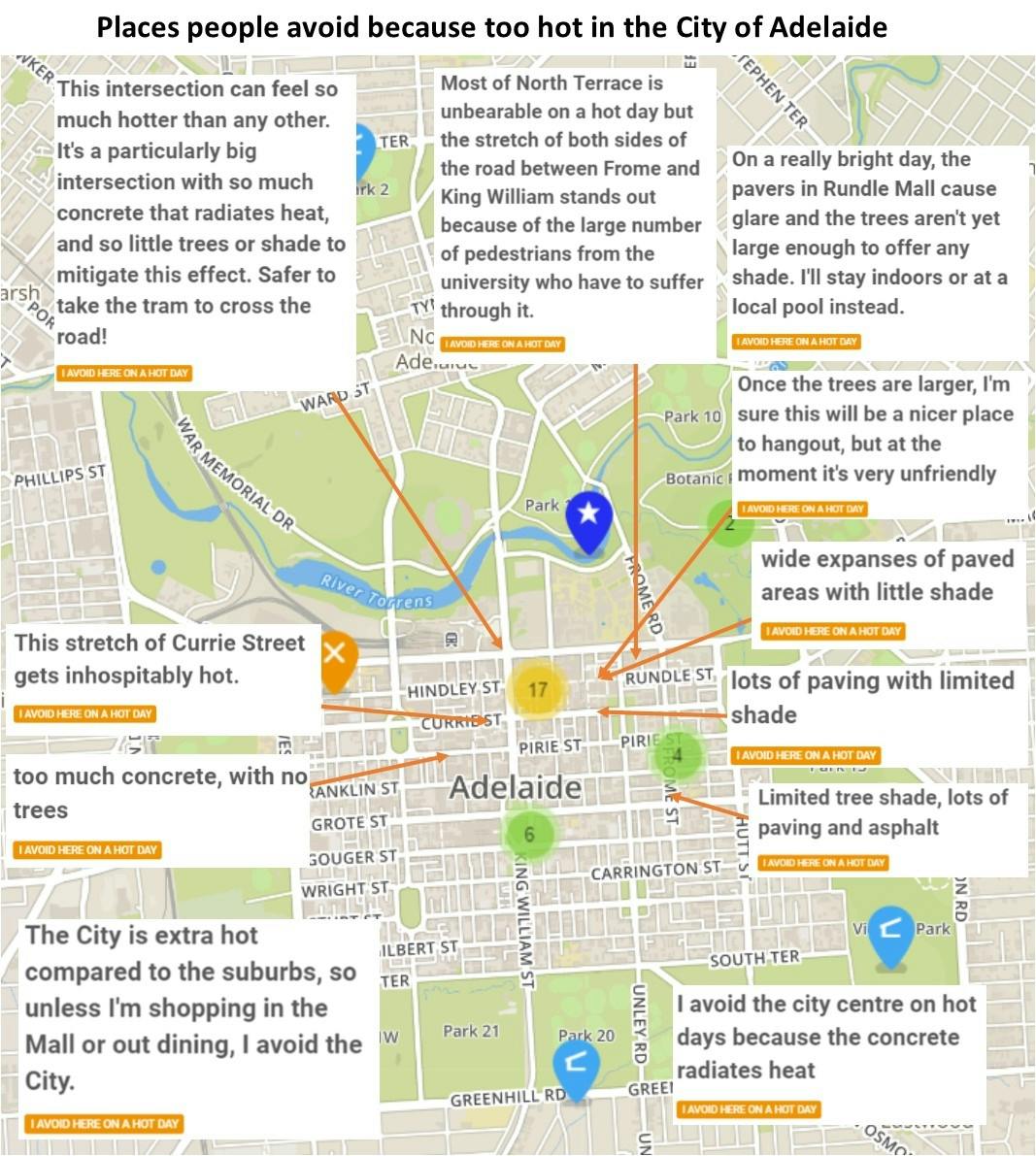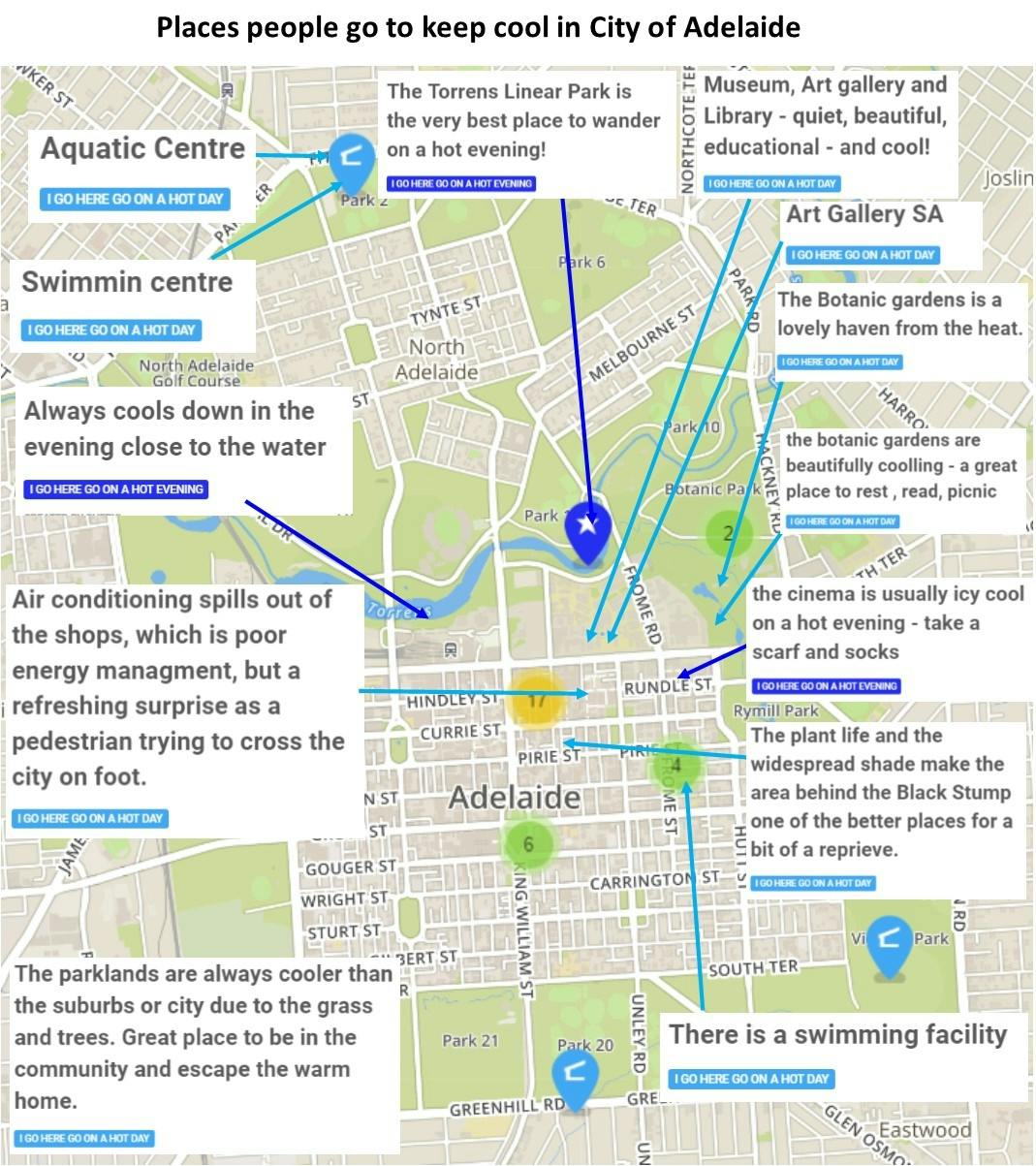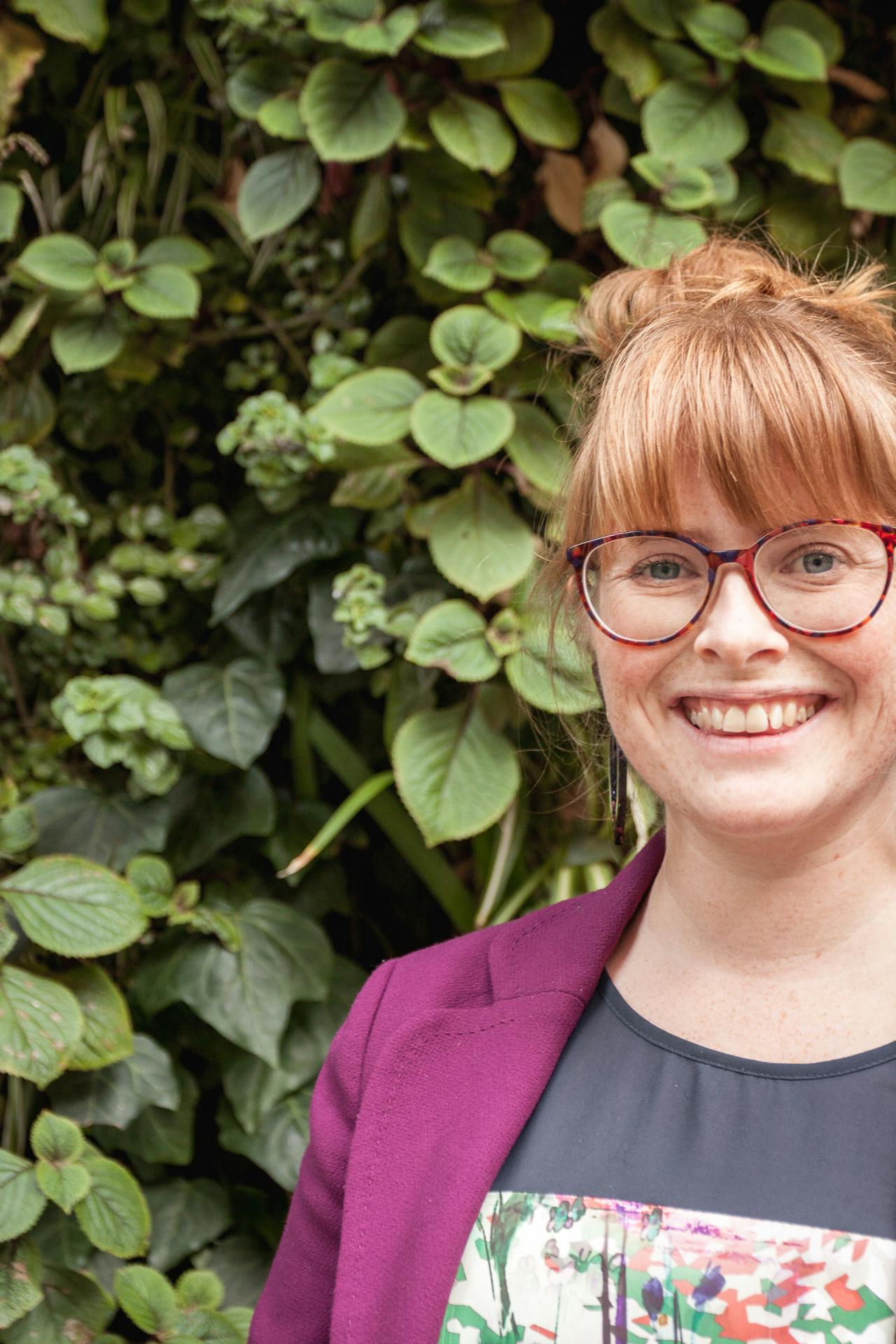Feeling Hot Hot Hot event
The Feeling Hot Hot Hot! public panel session was held on Wednesday 6 February at the Adelaide Town Hall. The panel was made up of senior leaders from key organisations, and was facilitated by Amanda Blair. She first facilitated an update of the current climate and heat situation and then guided the panellists through an extended heatwave hypothetical scenario set in 2025, where they discussed how this impacts them, the community, and what they need to do to prepare for such occurrences (and a strong comparison was made to the heatwaves from the last few summers). Click here to see a summary of key messages from panellists and click here to the Resilient East website to read more highlights, see photos and watch the highlights or the full videos.
Approximately 860 people registered to attend this event, with 489 attendees. 54% of attendees participated in filling out a ‘before’ and ‘after’ engagement card, where 91% of respondents indicated that they felt that the event had increased their understanding of heatwaves. We asked ‘before’ what actions people would do prepare for a heatwave and when it is hot, and then again ‘after’ to see what was picked up as key actions that people would consider based on attending the event, see the top results here.
Post-event survey from Feeling Hot Hot Hot event
Following the event we sent follow-up emails and distributed a survey for feedback and learnings. One question we asked was about what people would like to see in their neighbourhoods to decrease impacts of heat:
- 64% of respondents mentioned increasing trees and greenspaces and private property
- 25% mentioned reducing hard surfaces and the use of permeable paving or water sensitive urban design
- Other suggestions were related to development, design of building and streets, use of renewable energy, adapting existing roads by painting them lighter colours and better catchment reuse of water
The top six things respondents were interested in hearing about in relation to being climate ready are:
- Housing retrofit / rentals
- Water and Power
- Transport
- Plants and gardening
- Sustainable new build housing
- Urban Planning
Pre-event summer survey about heat preparedness
This survey was prompted people to think about their own preparedness, vulnerability to and response to extreme heat. The main reasons why people might not be able to keep cool during a heatwave were poorly designed or insulated housing (24%), there is not much shade (18%) or vegetation (16%) around their house, or not being able to keep their air conditioning on for multiple days (10%).
50% of respondents believe their health is vulnerable to heat related stresses and conditions. 33% of people responded saying they were a little prepared for the heatwaves this summer and 48% were no more or less prepared than normal.
Online Map tool
We asked people to drop pins on where they avoided on a hot day or night, and where they go to keep cool on an extremely hot day or night – 35 people dropped 92 markers on the map. The results are here for metropolitan Adelaide, and the city-based results are evident in these images. Some key findings are:
- 11 pins dropped for either general CBD or specific parts of the footpaths that they avoid because are too hot during the day – many people commented on a lack of trees
- 13 pins dropped to keep cool in the daytime with publicly accessible places that have good air conditioning or indoor pools, or are surrounded by greenery (Botanic Gardens or Park Lands), and at the night time the Torrens River got a few mentions as being a place of respite.
- 27 pins dropped at beaches to cool down on a hot day or night, and many people avoid the city and heavily paved areas. Specific places in the city might form respite, for example near the Torrens River, the Botanic Gardens, and indoor pools or free venues that have air conditioning like the Museum and Art Gallery.
These findings align with the recently released Heat Mapping data - the parts of the city that have green ground cover and / or canopy cover and are irrigated are typically cooler and provide a increased level of thermal comfort. This confirms the science behind the Urban Heat Island Effect.
We will use this Heat Mapping data to help inform policy and planning decisions, and it is available in an accessible online tool hosted by the State Government for all to use across most of metropolitan Adelaide.
How to stay informed
Stay informed with further updates on how our city and Resilient East are adapting to heat and climate change clicking here.











